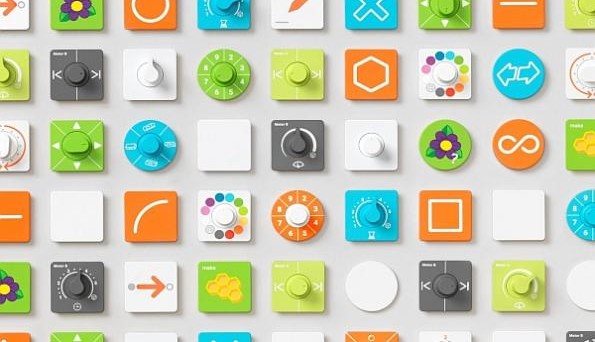Coding for Kids with Google Project Bloks – and RPi
September 06, 2016
on
on

Colorful tangible blocks that once snapped together, send their equivalent in compiled code to a nearby robot or application. That’s how Google Creative Labs and IDEO (the .com, not the .org) believe programming can be taught at a very young age.
The ‘Brain Board’ is the processing unit of the system, it provides ‘Base Boards’ that make up the system with power and contains an API to receive and send data. The RPi “below” the Brain Board will ultimately compile and send the code to any device with Wi-Fi or Bluetooth connectivity.
Each Base Board has a haptic motor and LEDs that can be used to give end-users real time feedback (this could be green when a code is valid, or red when there is a compile error or a bug). While the Base Boards can be connected in different orientations to create different programming flows, they take their instructions from the Pucks — inexpensive, customizable physical instructions that seat on top of them. The Pucks in turn are swappable, they share their instructions "written" as patterns of conductive ink, whose orientation and direction can be sensed by the Base Board's capacitive sensor. The physical instructions could be made of paper or cardboard or take the shape of many different interactive forms.
The researchers through their website are now looking for participants (educators, developers, parents and researchers) from around the world to remotely take part in their research studies. Age restriction: none :-) and I surmise Google with their Bloks will build statistiks and rekords of any kid’s kolor preferences and koding errors.
The ‘Brain Board’ is the processing unit of the system, it provides ‘Base Boards’ that make up the system with power and contains an API to receive and send data. The RPi “below” the Brain Board will ultimately compile and send the code to any device with Wi-Fi or Bluetooth connectivity.
Each Base Board has a haptic motor and LEDs that can be used to give end-users real time feedback (this could be green when a code is valid, or red when there is a compile error or a bug). While the Base Boards can be connected in different orientations to create different programming flows, they take their instructions from the Pucks — inexpensive, customizable physical instructions that seat on top of them. The Pucks in turn are swappable, they share their instructions "written" as patterns of conductive ink, whose orientation and direction can be sensed by the Base Board's capacitive sensor. The physical instructions could be made of paper or cardboard or take the shape of many different interactive forms.
The researchers through their website are now looking for participants (educators, developers, parents and researchers) from around the world to remotely take part in their research studies. Age restriction: none :-) and I surmise Google with their Bloks will build statistiks and rekords of any kid’s kolor preferences and koding errors.
Read full article
Hide full article


Discussion (0 comments)